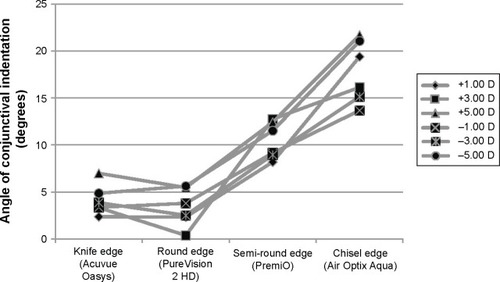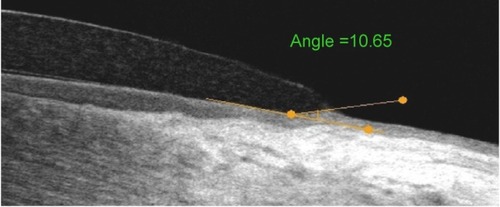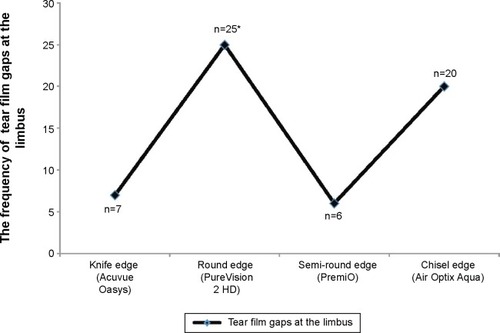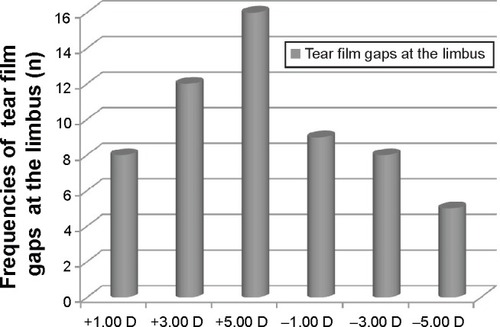Figures & data
Table 1 Characteristics of the contact lenses used in the study
Figure 3 Angle of conjunctival indentation was measured by optical coherence tomography for different edge designs.
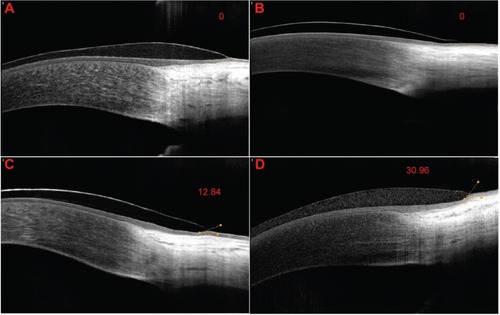
Figure 4 Comparison of conjunctival pressure exerted by the lens edge for different edge designs, regardless of the lens power.
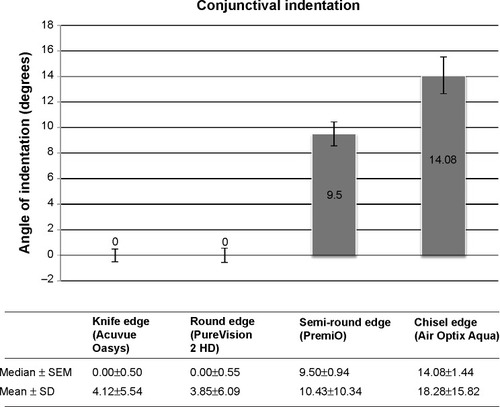
Figure 5 Distribution of conjunctival indentation according to lens power and edge design.
